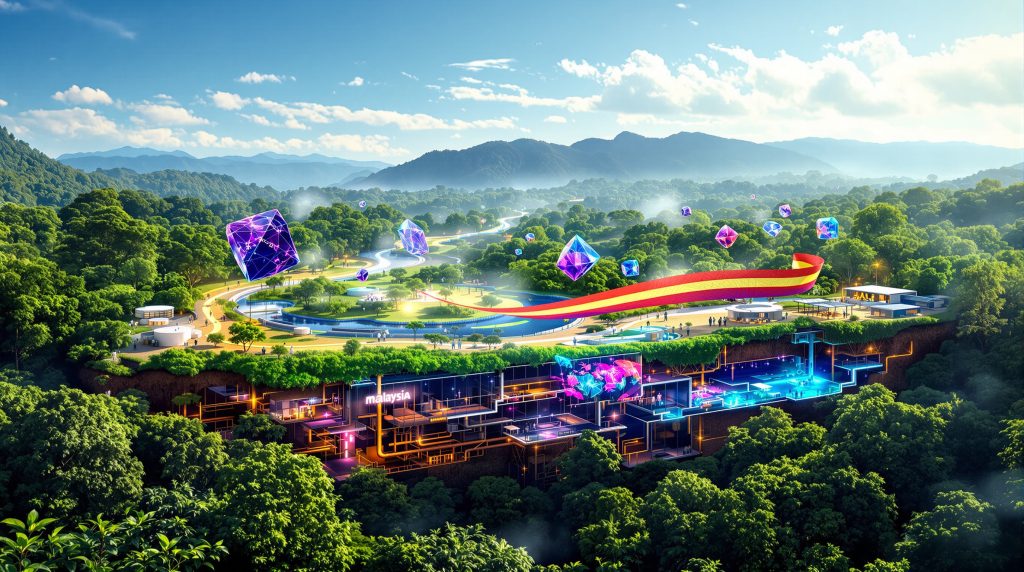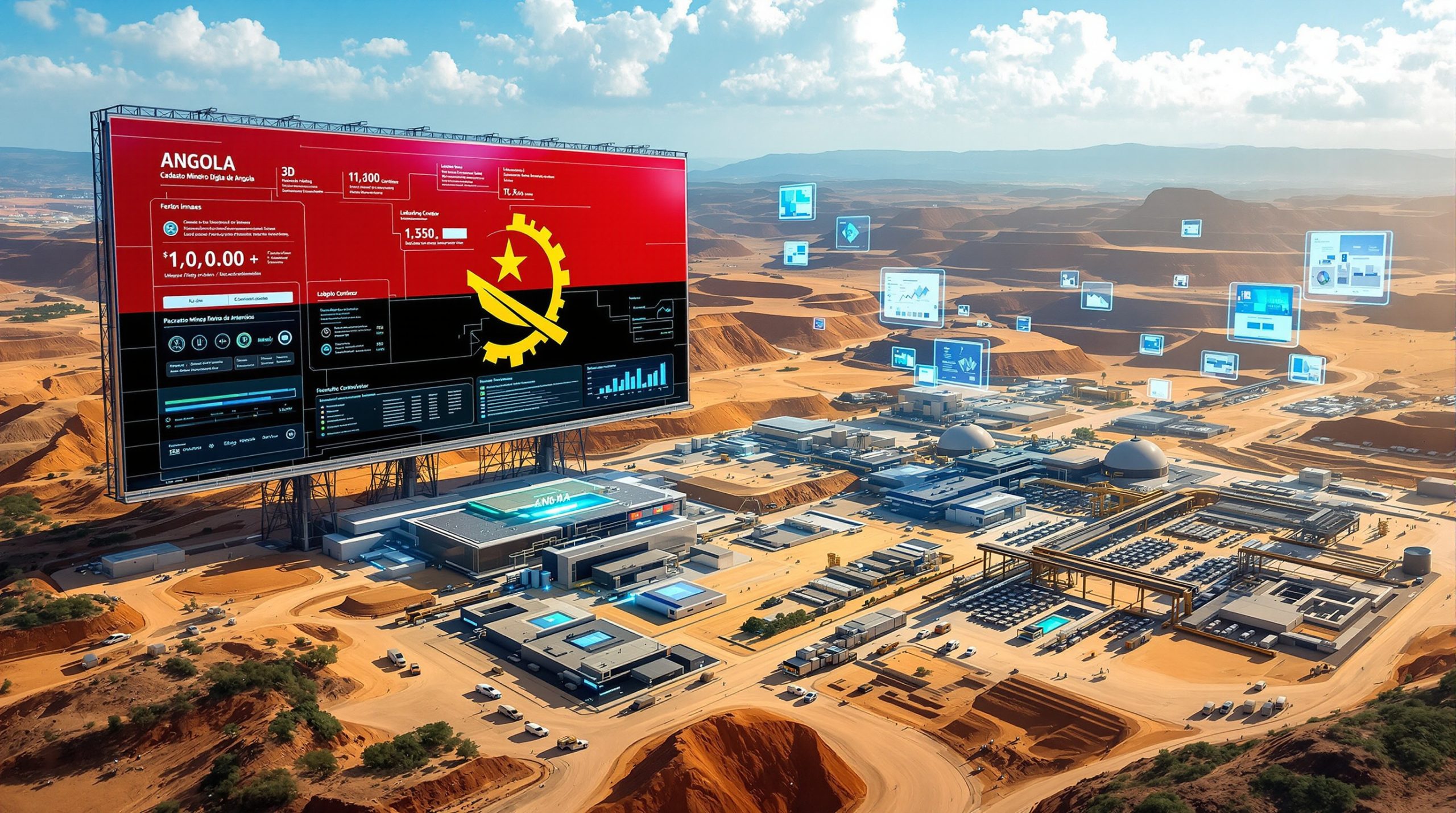Southern Alliance Mining's Forest Diplomacy Framework
The global mineral supply chain faces persistent vulnerabilities as nations seek alternatives to China-dominated rare earth production. Developing sustainable extraction methodologies requires balancing environmental stewardship with strategic resource security, particularly in regions where tropical ecosystems intersect with valuable mineral deposits. This intersection creates unique opportunities for Southern Alliance Mining forest diplomacy collaboration between research organisations, regulatory bodies, and mining companies to establish new frameworks for responsible resource development.
Forest-Integrated Extraction: A Multi-Institutional Approach
Malaysia's approach to rare earth development emphasises institutional partnerships that prioritise scientific validation before commercial implementation. The Forest Research Institute Malaysia (FRIM), established in 1929, serves as the primary research partner for evaluating extraction methodologies within forest reserve environments. This collaboration model incorporates the Forestry Department for regulatory oversight and JMG Johor for geological assessment, creating a comprehensive framework for evidence-based mineral development.
The institutional framework represents a departure from traditional mining industry innovation patterns where environmental studies typically follow rather than precede regulatory approval. By establishing research partnerships upfront, this approach aims to build scientific legitimacy through peer-reviewed studies and transparent environmental monitoring protocols.
In Situ Leaching Technology in Tropical Settings
In situ leaching (ISL) technology offers potential advantages over conventional open-pit mining by minimising surface disturbance and preserving forest canopy structure. The methodology involves injecting leaching solutions through strategically placed wells to dissolve target minerals underground, then recovering the pregnant solution through production wells for processing.
However, ISL implementation in tropical forest environments presents unique technical challenges. Furthermore, these challenges require careful consideration across multiple environmental factors:
• High annual rainfall (2,000-5,000 mm in Malaysian forest reserves) creates complex hydrological dynamics affecting leachant migration patterns
• Shallow water tables (typically 2-8 metres depth) increase potential for groundwater interaction with leaching solutions
• Laterite soil formations dominate upper soil profiles, creating variable permeability conditions that affect contaminant transport rates
• Biodiversity preservation requirements necessitate long-term ecosystem monitoring and rehabilitation protocols
The technology shows promise for rare earth extraction, particularly for heavy rare earth elements (HREEs) that command premium pricing due to their critical applications in permanent magnet motors and defence systems. Approximately 40% of global uranium production utilises ISL methodology, though primarily in arid regions with different geological and hydrological conditions than tropical Malaysia.
Addressing Historical Environmental Controversies
Malaysia's rare earth sector carries significant historical baggage from environmental controversies that shaped public perception and regulatory frameworks. The Lynas Rare Earths facility in Kuantan, operational since 2012, generated substantial community opposition regarding thorium waste management and water contamination risks.
| Historical Challenge | Current Mitigation Strategy |
|---|---|
| Lynas waste controversy | Proactive scientific validation through institutional partnerships |
| Community distrust | Multi-stakeholder engagement with transparent study publication |
| Regulatory gaps | Integrated agency oversight from project inception |
| Environmental uncertainty | Evidence-based assessment protocols with peer review |
The Lynas facility processes approximately 10,000-11,000 tonnes of rare earth oxide equivalent annually, making it the world's largest rare earth processing facility outside China. However, its focus on processing imported ore concentrates rather than domestic extraction distinguishes it from current forest-based exploration initiatives.
Building Community Confidence Through Transparency
The current Southern Alliance Mining forest diplomacy collaboration attempts to address historical trust deficits through several mechanisms. In addition to traditional engagement approaches, these strategies emphasise proactive transparency:
• Preemptive stakeholder engagement involving local communities before exploration activities commence
• Scientific study publication commitments ensuring research findings receive peer review and public access
• Environmental monitoring frameworks with independent oversight and regular reporting
• Community benefit-sharing mechanisms providing economic incentives for local participation
These approaches recognise that community acceptance now requires evidence-based validation prior to, rather than following, regulatory approval. The strategy emphasises building scientific legitimacy upfront rather than addressing concerns reactively.
Strategic Importance for Global Supply Chain Security
China currently controls approximately 60-65% of global rare earth mining capacity and 85-90% of processing capacity, creating significant supply chain vulnerabilities for Western nations. Heavy rare earth elements represent only 5-8% of total production by tonnage but 25-40% by value, making them particularly strategic for technology and defence applications.
Heavy Rare Earth Market Positioning
Global HREE demand reached approximately 8,000-12,000 tonnes rare earth oxide equivalent in 2023, with projected annual growth of 8-12% through 2030 driven by electric vehicle and wind turbine manufacturing. Current non-China HREE production remains limited due to complex uranium market dynamics and extraction challenges:
• Myanmar: 5,000-8,000 tonnes REO annually, but subject to geopolitical instability
• Vietnam: Exploration stage with no commercial production
• United States: MP Materials' Mountain Pass facility produces <5,000 tonnes REO annually
• Malaysia: Currently zero primary production
Malaysia's forest-integrated approach aims to position the country as an ESG-aligned alternative to Chinese production. Consequently, this positioning emphasises several key advantages:
-
Environmental compliance through institutional oversight and transparent monitoring
-
Supply chain diversification for Western nations seeking China-independent sourcing
-
Technology innovation in sustainable extraction methodologies
-
Regulatory stability through multi-agency collaboration frameworks
ESG-compliant rare earth sourcing commands pricing premiums of 5-15% over commodity pricing, reflecting market demand for responsibly-sourced supplies.
Regional Leadership in Sustainable Mining Practices
The institutional collaboration model could serve as a template for other Southeast Asian nations developing their mineral resources. Key elements include advanced data-driven mining technology integration:
• Multi-agency partnership frameworks integrating research, regulatory, and industry stakeholders
• Cross-border knowledge sharing to standardise sustainable extraction practices
• Technology transfer opportunities for ISL methodology development
• International best practice establishment through peer-reviewed research publication
Technical and Environmental Considerations
ISL technology in tropical forest environments faces several unresolved technical uncertainties that require careful evaluation and mitigation. Furthermore, these challenges intersect with global trade considerations, particularly given ongoing US-China trade impacts on critical mineral supply chains.
Soil Mobility and Hydrological Challenges
Tropical forest soils undergo significant water infiltration and lateral movement during high-rainfall periods. Contaminant plume transport in tropical soils occurs at variable rates depending on soil permeability, ranging from 10 metres/year in clay-rich laterites to 100+ metres/year in sandy formations.
Critical Environmental Uncertainties: Water table fluctuations during monsoon seasons affect leachant recovery efficiency and create potential groundwater contamination pathways. Long-term ecosystem impacts remain poorly understood for tropical forest ISL operations.
Laterite soil formations, characteristic of Malaysian forest regions, create complex hydrogeological conditions. These iron-rich weathered profiles can both impede and channel water movement depending on specific mineralogy and structure, making predictive modelling challenging.
Scientific Validation Requirements
FRIM's research mandate includes conducting baseline environmental studies and impact assessments for proposed extraction activities within forest reserves. The institution operates under the Ministry of Natural Resources and Environmental Sustainability and has established protocols for:
• Baseline ecological surveys documenting pre-extraction biodiversity and ecosystem function
• Impact assessment methodologies using standardised monitoring protocols
• Monitoring technology deployment including automated sensors and regular sampling programmes
• Rehabilitation success metrics defining measurable outcomes for post-extraction ecosystem recovery
However, no peer-reviewed studies specifically document ISL rare earth extraction in tropical forest settings. Comparable ISL operations exist for uranium production, but geological and hydrological conditions differ substantially from tropical Malaysia.
Investment Evaluation Framework
Investors evaluating Malaysia's forest-integrated rare earth strategy must consider multiple risk factors and opportunity indicators across environmental, technical, and market dimensions. For instance, these considerations require comprehensive analysis of both traditional mining metrics and innovative sustainability measures.
Risk Assessment Considerations
Environmental Compliance Track Record: While FRIM has established research capabilities, the institution lacks direct experience with rare earth ISL operations. Previous environmental studies focused primarily on forestry and biodiversity conservation rather than mineral extraction impacts.
Regulatory Approval Probability: Malaysia's multi-agency approval process creates both oversight benefits and potential delays. Coordination between FRIM, Forestry Department, and JMG Johor requires clear decision-making authority and timeline commitments.
Community Acceptance Indicators: Historical opposition to Lynas operations demonstrates persistent community concerns about rare earth extraction. Local acceptance depends heavily on transparent communication and tangible benefit-sharing arrangements.
Technology Viability Metrics: ISL success rates vary significantly based on geological conditions. Tropical forest applications require validation through pilot testing and peer-reviewed technical analysis.
Market Opportunity Analysis
HREE Demand Growth: Electric vehicle manufacturing alone requires approximately 1-2% dysprosium by weight for permanent magnet motors, translating to substantial HREE demand growth as EV adoption accelerates globally.
Supply Chain Security Premiums: Western governments increasingly value supply chain diversification through policy support and procurement preferences. The U.S. Critical Minerals Strategy and EU Critical Raw Materials Act provide framework support for non-China sourcing initiatives.
Competitive Positioning Advantages: Malaysia offers several structural advantages including political stability, established mining regulations, English-language business environment, and geographic proximity to major Asian markets.
Southeast Asian Mining Diplomacy Evolution
Malaysia's institutional collaboration model signals broader evolution in Southeast Asian approaches to mineral development, emphasising stakeholder engagement and environmental sustainability as competitive advantages rather than regulatory burdens. However, this evolution must also consider broader mine reclamation innovation trends affecting industry standards globally.
Regional Cooperation Framework Development
The FRIM-Forestry-JMG partnership model could influence similar initiatives across ASEAN nations facing pressure to develop mineral resources while maintaining environmental commitments. Key elements include:
• Standardised environmental assessment protocols for cross-border knowledge sharing
• Technology transfer agreements enabling ISL methodology development across multiple countries
• Regulatory harmonisation initiatives reducing compliance complexity for international investors
• Joint research programmes leveraging regional expertise in tropical ecosystem management
Indonesia has implemented comparable stakeholder-first frameworks following environmental controversies at major mining operations. These approaches emphasise institutional research partnerships and transparency as preconditions for approval, creating regional precedent for Malaysia's current strategy.
International Investment Implications
Foreign direct investment in Southeast Asian mineral development increasingly emphasises ESG compliance and community engagement as risk mitigation strategies. Malaysia's forest diplomacy approach addresses several key investor concerns:
• Environmental liability reduction through proactive scientific validation
• Social licence maintenance via transparent stakeholder engagement
• Technology partnership opportunities enabling knowledge transfer and cost sharing
• Export market development with ESG-compliant certification for premium pricing
Environmental Safety and Rehabilitation Protocols
ISL technology safety depends heavily on geological and hydrological site conditions, making location-specific assessment critical for tropical forest applications. Furthermore, safety protocols must incorporate lessons learned from established forest ecosystem initiatives worldwide.
ISL Safety in Forest Ecosystems
Current scientific understanding of ISL environmental impacts draws primarily from uranium extraction operations in arid regions. Kazakhstan produces approximately 27,000 tonnes uranium annually using ISL methodology, but in geological conditions fundamentally different from tropical Malaysia.
Risk mitigation protocols for forest environments must address:
• Groundwater protection through injection well casing and pressure monitoring
• Surface water contamination prevention via controlled recovery systems and containment
• Soil chemistry restoration following leachant neutralisation and site rehabilitation
• Biodiversity impact minimisation through selective well placement and access corridors
Recovery success rates for ISL operations vary significantly based on site-specific conditions. Uranium ISL operations typically achieve 60-80% recovery efficiency, though rare earth applications may differ due to distinct mineralogy and leaching chemistry requirements.
Monitoring and Compliance Requirements
FRIM's research protocols emphasise continuous monitoring throughout extraction phases:
-
Pre-extraction baseline studies documenting ecosystem function and species diversity
-
Active monitoring during operations tracking water quality, soil chemistry, and vegetation health
-
Post-extraction rehabilitation assessment measuring ecosystem recovery against baseline metrics
-
Long-term follow-up studies extending 5-10 years beyond operation cessation
However, tropical forest rehabilitation timelines remain poorly quantified for ISL operations, creating uncertainty about long-term environmental outcomes.
Investment Strategies and Market Positioning
Malaysia's forest-integrated rare earth approach presents distinct investment opportunities within the broader critical minerals supply chain diversification trend. Consequently, this positioning requires careful consideration of both technical feasibility and market dynamics.
Production Capacity and Timeline Projections
While specific production targets remain undisclosed pending FRIM's scientific assessment, successful ISL development could position Malaysia as a significant HREE producer within the 2027-2030 timeframe. Potential market impact includes:
• HREE supply diversification reducing Western dependence on Chinese processing
• ESG-compliant sourcing options for technology companies facing sustainability pressures
• Regional production hub development serving Southeast Asian rare earth processing networks
• Technology demonstration effects influencing similar projects across ASEAN nations
Global HREE demand growth of 8-12% annually through 2030 suggests substantial market opportunity for new production sources meeting ESG criteria.
Strategic Investment Considerations
Institutional investors evaluating Malaysia's rare earth sector must weigh several factors:
Regulatory Timeline Uncertainty: Multi-agency approval processes create potential delays but also reduce environmental compliance risks through thorough vetting.
Technology Development Costs: ISL methodology adaptation for tropical forest conditions requires significant R&D investment before commercial viability confirmation.
Market Access Advantages: Malaysia's trade relationships and geographic position provide preferential access to major Asian markets and Western supply chain diversification initiatives.
ESG Premium Capture: Growing corporate and governmental emphasis on supply chain sustainability creates pricing advantages for compliant producers.
Investment strategies should emphasise long-term positioning rather than short-term production targets, given the institutional collaboration model's emphasis on thorough scientific validation before commercial development.
Future Outlook and Strategic Implications
Malaysia's forest diplomacy model in rare earth development signals broader shifts in how emerging producers approach critical mineral extraction in environmentally sensitive regions. In addition, this model represents a significant departure from traditional extraction methodologies.
Critical Mineral Diplomacy Evolution
The institutional partnership framework addresses multiple strategic objectives simultaneously:
• China dependency reduction for Western allies seeking supply chain security
• Environmental leadership demonstration positioning Malaysia as a responsible producer
• Technology innovation advancement in sustainable extraction methodologies
• Regional cooperation enhancement through knowledge sharing and best practice development
Success of this model could influence similar initiatives across Southeast Asia, Africa, and Latin America where valuable mineral deposits overlap with ecologically sensitive regions.
Long-Term Market Positioning
Malaysia's potential emergence as an ESG-aligned HREE producer occurs within broader geopolitical competition for critical mineral supply chain control. U.S., EU, and allied nation strategies increasingly emphasise supply diversification through policy support, investment incentives, and procurement preferences.
The forest-integrated approach positions Malaysia to capture multiple value premiums:
-
Geographic diversification premium for non-China sourcing
-
ESG compliance premium meeting corporate sustainability requirements
-
Supply security premium providing reliable alternative to geopolitically unstable sources
-
Technology leadership premium demonstrating innovative sustainable extraction capabilities
The Southern Alliance Mining forest diplomacy collaboration represents a paradigmatic shift towards institutional partnerships that prioritise environmental stewardship alongside resource development objectives. This approach acknowledges that sustainable mineral extraction requires comprehensive stakeholder engagement, scientific validation, and transparent monitoring protocols from project inception rather than as regulatory afterthoughts.
Disclaimer: This analysis contains forward-looking statements regarding Malaysia's rare earth sector development, ISL technology applications, and market projections. Actual outcomes may differ significantly from projections due to technical, environmental, regulatory, or market factors. Environmental impacts of ISL technology in tropical forest settings remain incompletely understood, and investment decisions should consider substantial uncertainty regarding operational feasibility and regulatory approval timelines.
Looking to Invest in Critical Mineral Supply Chain Diversification?
Malaysia's forest diplomacy approach highlights the growing opportunities in ESG-compliant rare earth development, but timing is everything when major mineral discoveries hit the ASX. Discovery Alert's proprietary Discovery IQ model delivers instant notifications on significant mineral discoveries across over 30 commodities, transforming complex exploration data into actionable insights for both short-term traders and long-term investors. Explore historic examples of exceptional discovery returns and begin your 30-day free trial today to position yourself ahead of the market.




